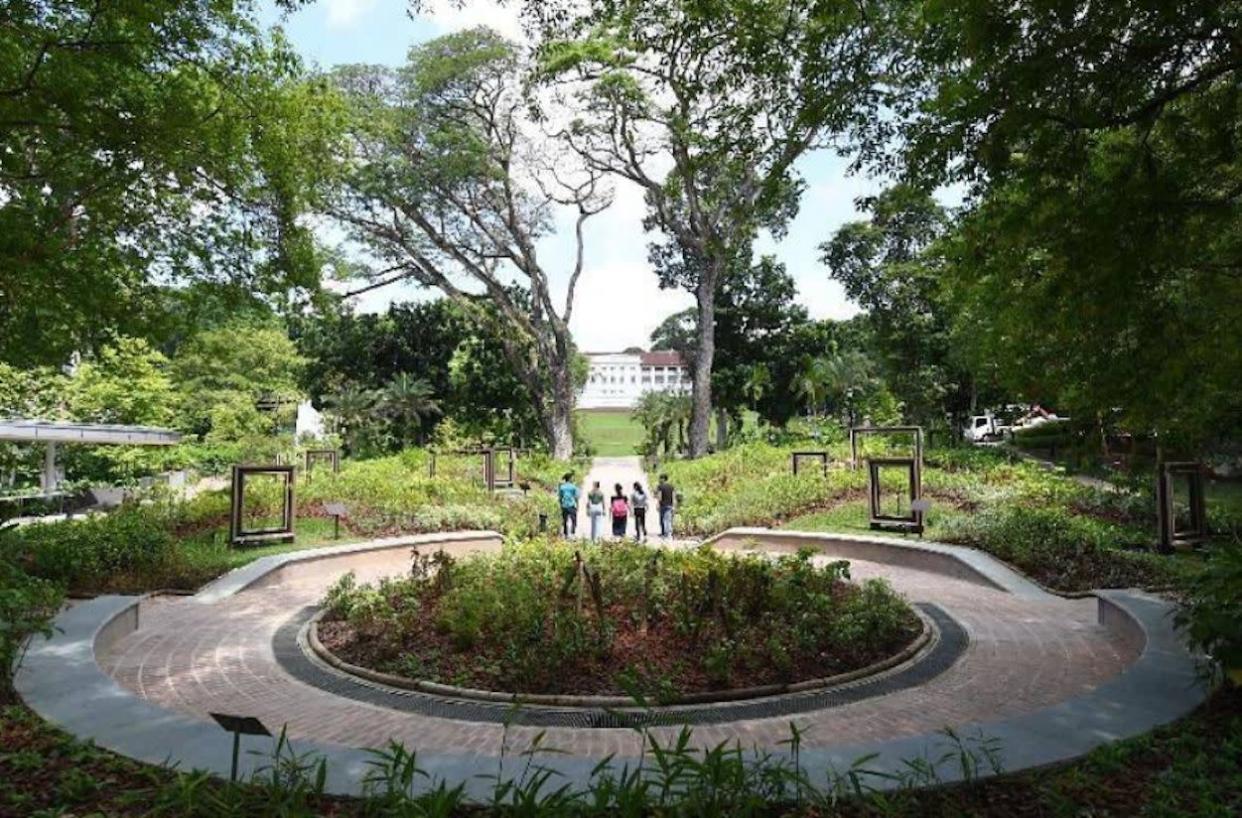Nine new gardens to tell rich history of Fort Canning Park

SINGAPORE — Nine historical gardens at Fort Canning Park, designed to highlight the historic park’s story, which dates back to the 14th century, were opened by Minister for National Development Lawrence Wong on Monday (27 May)
The National Parks Board (NParks) has referenced historical texts to restore the gardens, which take up about eight hectares of the 18ha park – Pancur Larangan (Forbidden Spring), Artisan's Garden, Sang Nila Utama Garden, Raffles Garden, Farquhar Garden, Jubilee Park, First Botanic Garden, Spice Garden and Armenian Street Park.
The streetscapes have also been enhanced to reflect the crops introduced to Singapore in the early colonial era.
For instance, the Spice Garden showcases spice-inspired plantings in a series of cascading terraces and restored plantations. Also, Armenian Street Park features a planting scheme that pays homage to Peranakan culture through spices used in Peranakan cooking.
Augmented-reality trails via smartphone app
Accompanying these gardens are new trail guides for visitors to plan their own trails and explore the hilly park at their own pace.
They can also make use of a 2.5km augmented-reality trail in the BALIKSG: Fort Canning Trail, available through the free BALIKSG smartphone app. Launched via a collaboration between NParks and the National Heritage Board, users can experience an interactive journey through Fort Canning Park, revisiting the place back when it was known as Bukit Larangan or Government Hill.
NParks has also installed covered escalators and a platform lift which will provide easier access to the park from the three nearby MRT stations – Fort Canning, City Hall and Bras Basah. Parts of the surrounding roads such as Canning Rise and Armenian Street have also been pedestrianised for better connectivity amid the city’s arts, cultural and heritage precinct.
Over two weekends from 1 to 9 June, NParks is organising a series of programmes at the park, including its Concert Series in the Park, archaeology workshops and talks, guided heritage walks and hands-on craft and spice sessions.
Second phase of park enhancement to be ready by 2021
The opening of the historical gardens marked the first phase of the enhancement plan for Fort Canning Park. Minister Wong announced during the opening that the second phase will be completed by 2021.
Plans for the second phase include repurposing Fort Canning Centre as a gallery to showcase the hill’s history and the beginnings of Singapore through the 14th, 19th and 20th centuries. NParks is also conducting a feasibility study on the possibility of a lookout point and gallery at the top of Fort Canning Hill.
Other Singapore stories:
Construction company charged for operating drone without a license
Inspiring lifelong passion in learning mother tongue is key emphasis among new LEP schools
Language Elective Programme to be introduced in selected secondary schools from 2020: Ong Ye Kung



